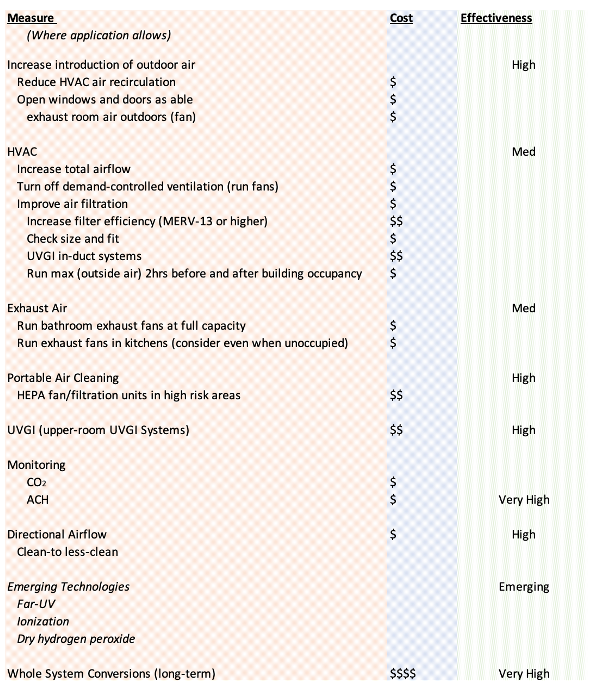Expert Charts CDC’s Updated Building Ventilation Guidelines
It is my advice that building managers seriously consider these measures, many of which are low cost and generate universal prevention measures.
When the Centers for Disease Control and Prevention (CDC) updated its guidance for ventilating buildings on March 23, the agency might have had the upcoming summer in mind—the guidance provides commonsense air circulation measures.
Those measures call for ventilation system upgrades, improvements, and modifications to dilute potential contaminates. It is my advice that building managers seriously consider these measures, many of which are low cost and generate universal prevention measures.
I developed the table below based on the CDC’s updated guidelines which are, in turn, partially based on the American Society of Heating, Refrigerating and Air-Conditioning Engineers (ASHRAE) Guidance for Building Operations During the COVID-19 Pandemic.
Air changes/hour (ACH) is the fundamental principle that guides current ventilation efforts involved in infectious disease mitigation. Keeping this in mind, I have assigned a generic assessment of cost and mitigation value. Those I have assigned as highly effective are most likely to increase ACH in a localized area. However, this depends on many factors.
In addition, there are interesting emerging technologies as well as long-term solutions available. A qualified HVAC provider can provide information on some of the suggested ventilation techniques. Organizations that are interested in a whole system and long-term cost-effective approach should seek consultation and engineering approaches.
Cedric Steiner, NHA, MBA, is a licensed nursing home administrator in Lancaster County, Pennsylvania. Contact him at steiner@gshealthcare.org.He is the founder and owner of GS International Healthcare, which offers advice to people building hospitals.
